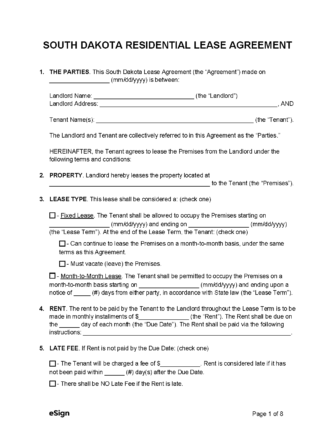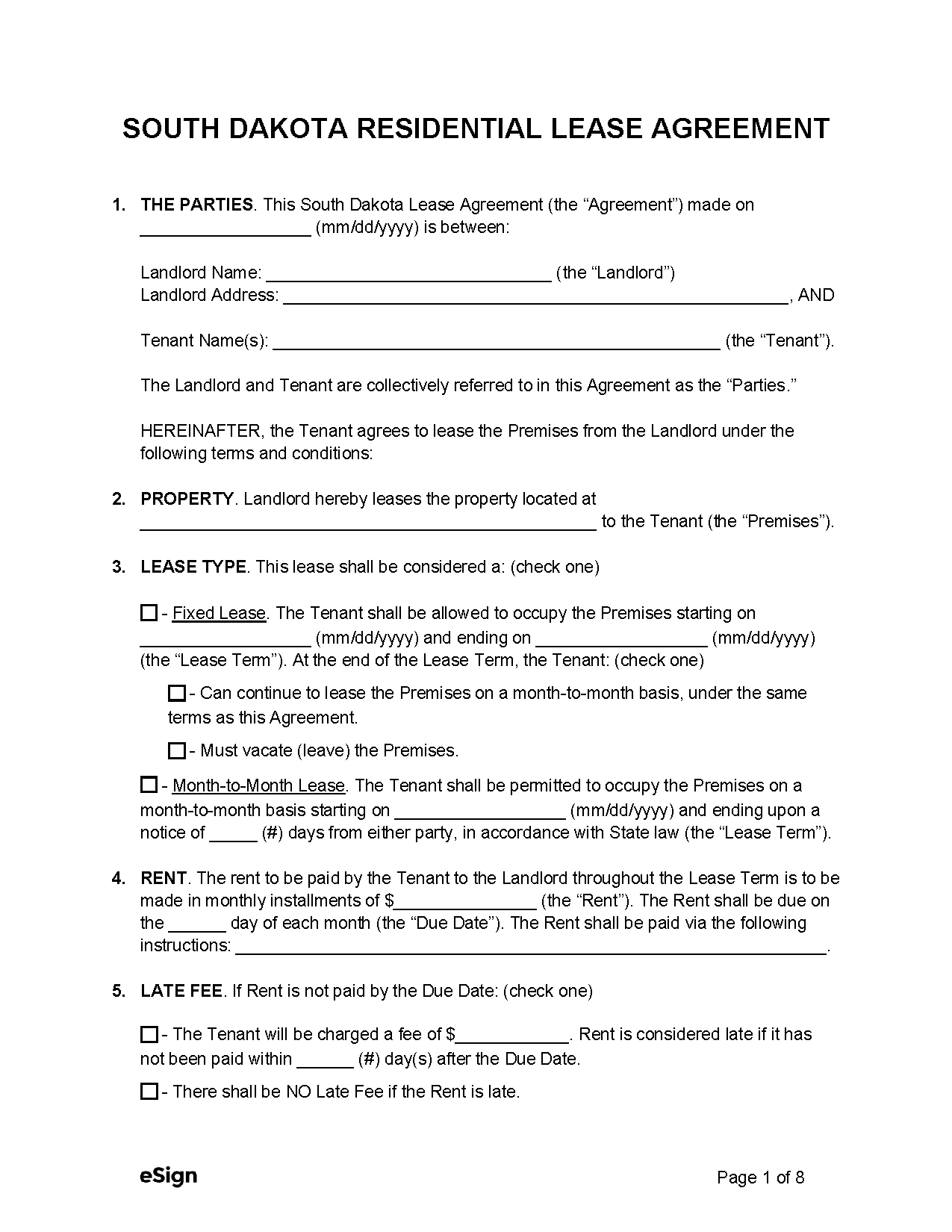Lease Agreements: By Type (6)
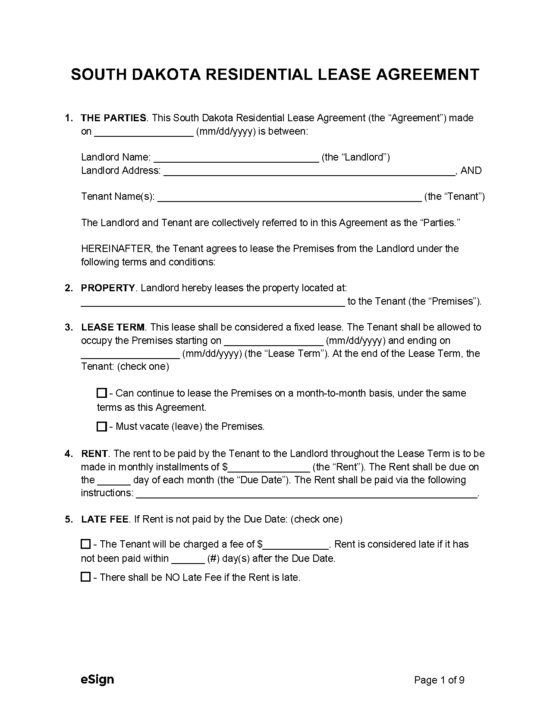
Standard (1-year) Lease Agreement – The most common lease that allows a tenant to occupy a residential space for a fixed term in exchange for rent payments.
Download: PDF |

Commercial Lease Agreement – A rental contract for a property used for commercial activity only. Unlike residential leases, commercial agreements often last between three and five years.
Download: PDF, Word (.docx), OpenDocument |
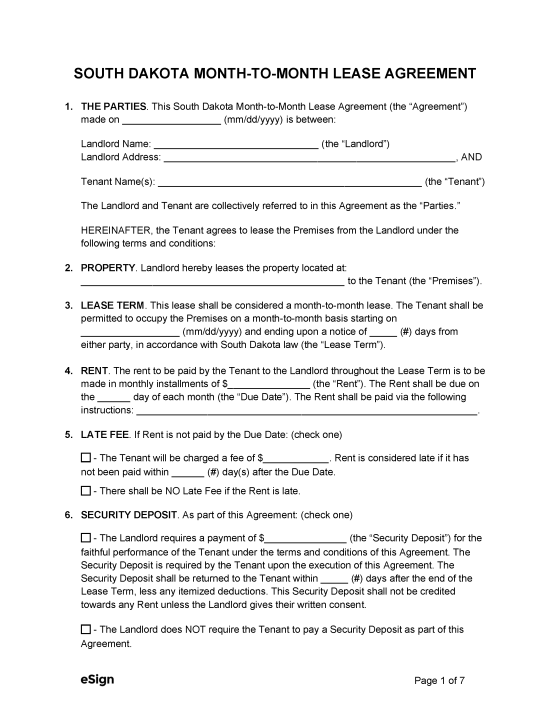
Month-to-Month Lease Agreement – A rental contract that renews on a monthly basis unless terminated by either party with 30 days’ notice.
Download: PDF, Word (.docx), OpenDocument |
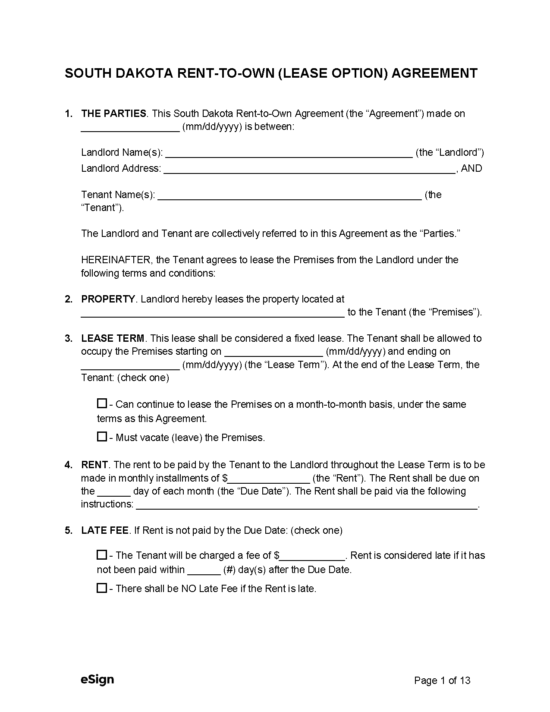
Rent-to-Own Agreement (Lease Option) – This lease contains conditions that allow the tenant to purchase the property at the end of the tenancy.
Download: PDF |
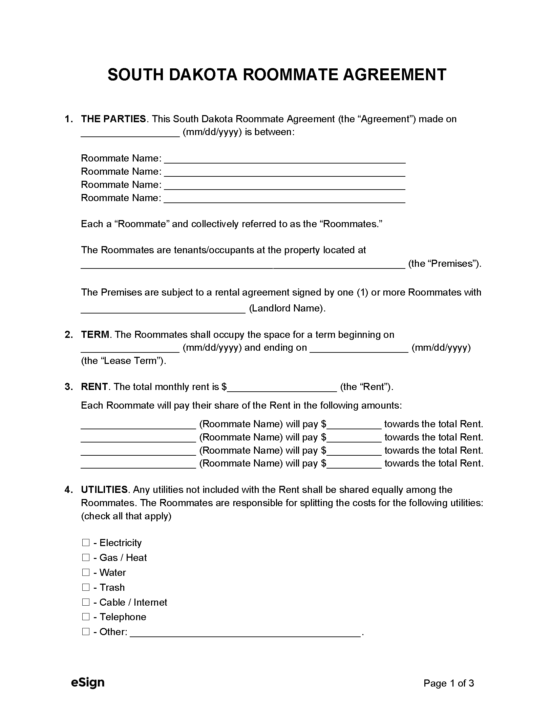
Roommate Agreement – A rental arrangement that allows multiple tenants to set terms and conditions for a shared residential space.
Download: PDF, Word (.docx), OpenDocument
|
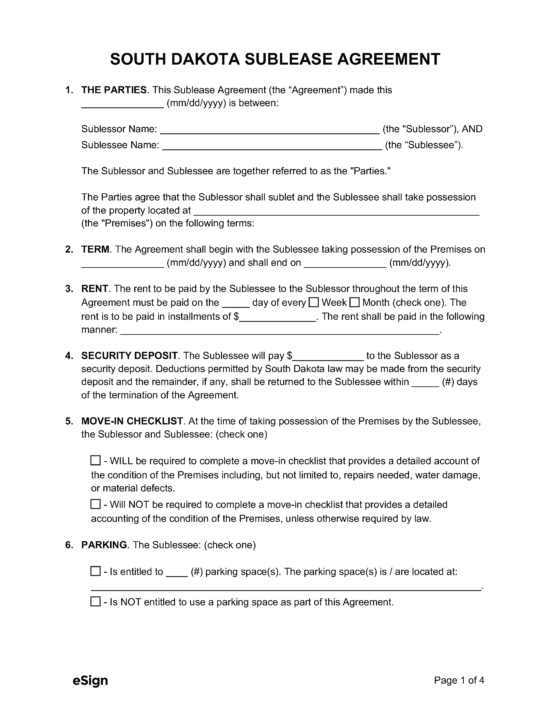
Sublease Agreement – Used by a tenant to rent their current dwelling to another person. In most cases, the primary tenant must receive permission from the landlord before subletting.
Download: PDF, Word (.docx), OpenDocument |
Required Disclosures (2)
- Lead-Based Paint Disclosure (PDF) – If a dwelling was constructed before 1978, this disclosure must be completed by the landlord and presented to the tenant.[1]
- Methamphetamine Disclosure (PDF) – If a landlord is aware that a dwelling was once used to manufacture methamphetamine, they must disclose this to all existing and future tenants.[2]
Security Deposits
Maximum Amount ($) – A maximum of one month’s rent may be charged for a security deposit.[3]
- Exception – A larger deposit can be agreed upon under special circumstances that could pose a danger to the premises.
Collecting Interest – State law does not specify how interest generated from security deposits shall be collected or distributed.
Returning to Tenant – Security deposits must be returned within 2 weeks after tenancy is terminated (60 days for commercial property).[4]
Itemized List Required? – Yes, if the tenant requests an itemized list within 45 days after tenancy is terminated (90 days for commercial).
Separate Bank Account? – No, there is no state law that requires landlords to keep security deposits in a separate bank account.
Rent Payments
Grace Period – Landlords can file for eviction without notice if rent is three days late.[6]
Maximum Late Fee ($) – Fees for late rent payment are not covered in state statutes.
Bad Check (NSF) Fee – Fees for bounced rent payment checks are not mentioned in state statutes.
Withholding Rent – After notifying the landlord, a tenant may withhold rent and deposit it into a separate account until the landlord repairs the issues mentioned in the written notice.[7]
Breaking a Lease
Non-Payment of Rent – A landlord can serve a notice to quit for non-payment as soon as rent is late. They can also file for eviction without notice after three days.[8]
Non-Compliance – A landlord can terminate a lease using an immediate notice to quit if the tenant fails to comply with certain terms of the agreement.[9]
Tenant Maintenance – Tenants must maintain the premises and make necessary repairs to any damage they cause.[10]
Lockouts – Landlords are not lawfully permitted to prevent the tenant from accessing their rental property.[11]
Leaving Before the End Date – Tenant abandonment is not mentioned in state statutes.
Lease Termination
Month-to-Month – A landlord or tenant can terminate a month-to-month tenancy by giving the other party a 1-month notice to terminate tenancy.[12]
- Exception – Tenants who are on active military duty or who are immediate family of active members are entitled to two months’ notice.
Unclaimed Property – A landlord can dispose of any unclaimed property equal to or less than $500 left by the tenant once 10 days have passed since they quit the property. For abandoned property over $500, the landlord can only dispose of it after 30 days.[13]
